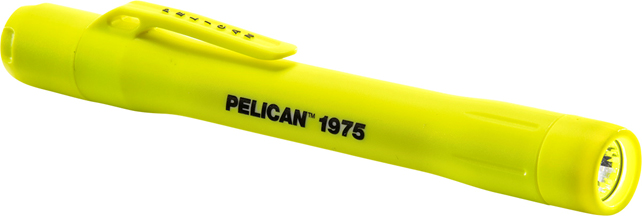
Here at New Trades Career we never endorse products, and whilst we do not endorse this torch, we did find it a bit fascinating, and just had to tell you about it.
Ask anyone involved in maritime activities if they’ve heard of Pelican, and they’ll raise an eyebrow, pause in contemplation, and finally mutter “is that a trick question?”. In fact, your eyebrow may be raising at this very moment.
Pelican Products has only been around since 1975; relatively very young considering its rapid reputation. They began their journey in California with the goal of supplying unique and dependable products to divers – primarily in the form of durable cases and lighting equipment strong enough to pierce the most veiling of murky waters.
Since then, they’ve spread their wings across a multitude of countries, and nestled into even more spheres of interest and industry. From individual consumers, to police and firefighting services, and even as far as militaries. And that’s really just a tiny sample of their prevalence across different sectors.
It’s fair to say they’ve been around a bit, and they know their stuff.
As I’ve conspicuously not yet included, trade skills professionals are also amongst their feathers – more-so in the USA. Their torches in particular have a strong following in trades – toe to toe with competitors that focused on tradespeople as a market from the outset. It’s easy to forget that Pelican didn’t have that initial focus. It stands to reason, of course. Pelican designs torches to illuminate areas that vehemently resist illumination and defy human habitation altogether. Even if you’re not experiencing that kind of extreme environment, there’s a certain level of confidence it can bring when you’re using one to scope around under floorboards, or creating paths through the darkness.
Take the 1975 Flashlight as a shining example:
https://www.pelican.com/us/en/product/flashlights/1975
First off the bat, it screams form-from-function in ‘solar yellow’: even without batteries, it’s hard at work taking the spotlight. You couldn’t lose track of this little thing even if you tried. And that plastic isn’t just for show, either. That’s nigh-impenetrable ABS modestly covering a heart of aluminium through its core. Its unmistakeable pen-like familiarity is surely not by chance, either – poised ready to draw sense from the deep darkness before you. And clip onto your pocket when it’s on a tea break, I suppose.
All that said, I think you’ll agree that it probably should contain some batteries at some point. The 1975 humbly asks for just 2 AAAs. It’s not greedy. Besides, it needs to keep its slim figure.
You may be waiting for the trade-off here. Perhaps all this is at the expense of that most crucial element of a flash light: light. Not a bit of it. We’re talking 117 Lumens. Not 110. Not 120. A picture of precision.
And to wrap it all up, with Pelican torches, you get the added bonus of extensive and specialised safety testing and certification. After all, they’re designed to resist some of the most extreme conditions a torch is ever likely to find itself in:
https://www.pelican.com/us/en/professional/blog/post/what-it-means-to-be-a-safety-certified-light/
The downside may well be in its energy efficiency then, since the webpage doesn’t address that aspect at all. Due to the added requirements that these certifications apply, compromises are made in other areas. This is a large part of why Pelican offers a wide range of different standards – so you can find the right level of compromise appropriate for the intended usage.
Sure, any old torch will do really. They all do the same thing. Pelican torches just do the same thing better and in more places.
Oh yes, and they’re waterproof of course.

 (5 votes, average: 4.40 out of 5)
(5 votes, average: 4.40 out of 5)